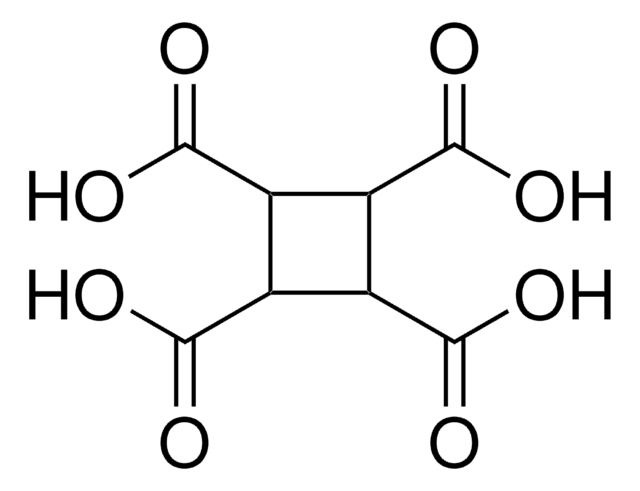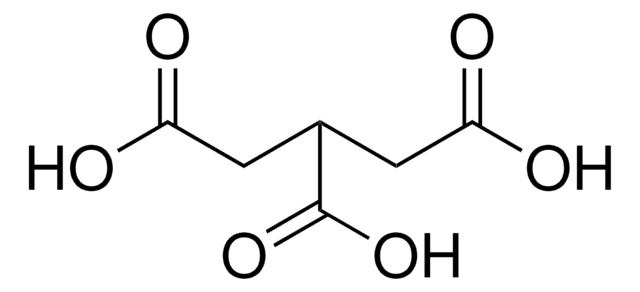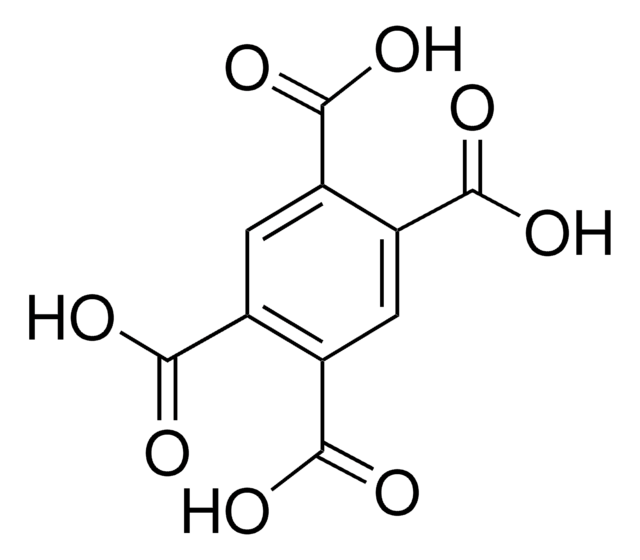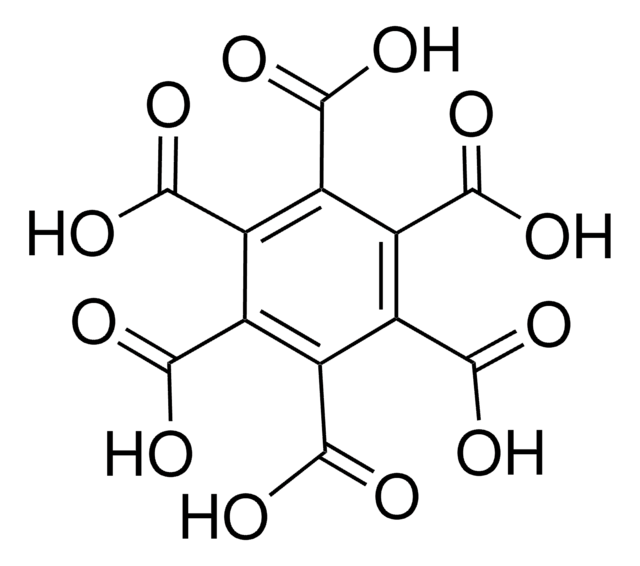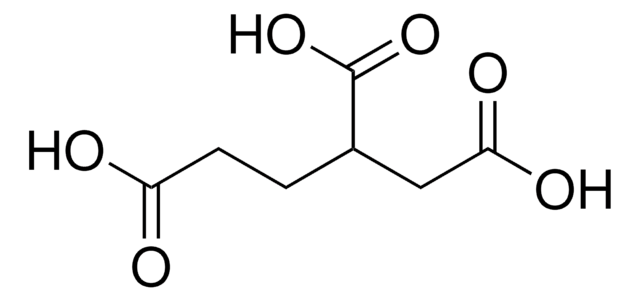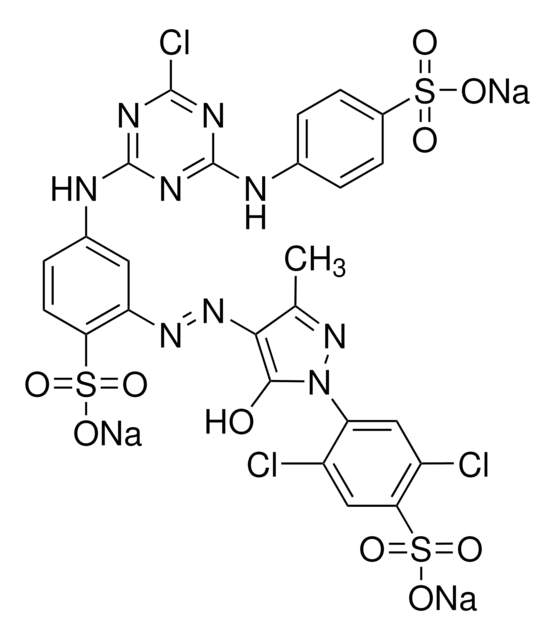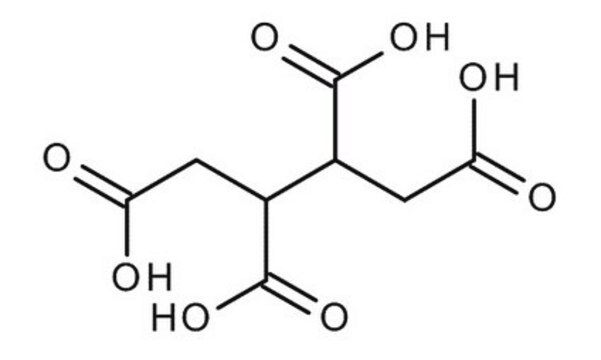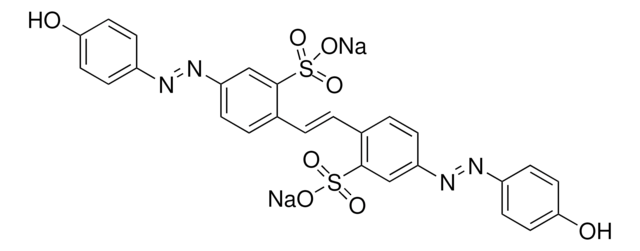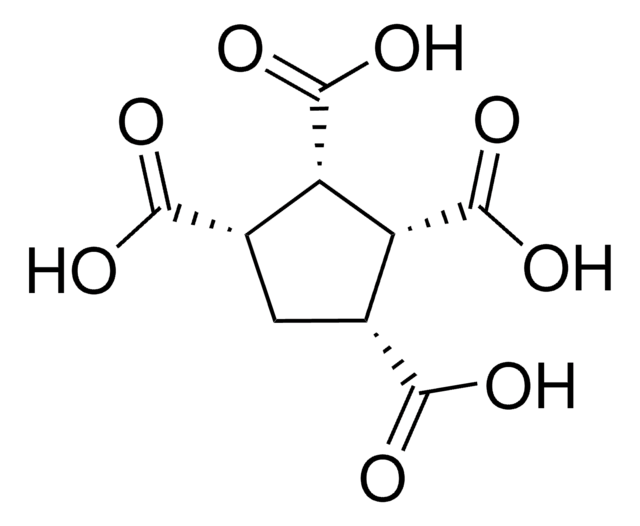257303
1,2,3,4-Butanetetracarboxylic acid
99%
Faça loginpara ver os preços organizacionais e de contrato
About This Item
Fórmula linear:
[-CH(CO2H)CH2CO2H]2
Número CAS:
Peso molecular:
234.16
Beilstein:
1729167
Número CE:
Número MDL:
Código UNSPSC:
12162002
ID de substância PubChem:
NACRES:
NA.23
Produtos recomendados
Ensaio
99%
Formulário
powder
pf
195-197 °C (dec.) (lit.)
cadeia de caracteres SMILES
OC(=O)CC(C(CC(O)=O)C(O)=O)C(O)=O
InChI
1S/C8H10O8/c9-5(10)1-3(7(13)14)4(8(15)16)2-6(11)12/h3-4H,1-2H2,(H,9,10)(H,11,12)(H,13,14)(H,15,16)
chave InChI
GGAUUQHSCNMCAU-UHFFFAOYSA-N
Procurando produtos similares? Visita Guia de comparação de produtos
Descrição geral
1,2,3,4-Butanetetracarboxylic acid (BTCA) is utilized as a cross-linking agent and as a building block for the synthesis of specialized polymers for the formulation of resins, polymers, coatings, and adhesives.
Aplicação
1,2,3,4-Butanetetracarboxylic acid (BTCA) can be used as a cross-linking agent:
- To functionalize cotton fabric. BTCA-treated fabric shows improved anti-pilling, wrinkle resistance, and fire-retardant properties.
- To fabricate flexible, free-standing nanocellulose membranes. The cross-linking with BTCA improves water stability and ionic conductivity of membranes.
Palavra indicadora
Warning
Frases de perigo
Declarações de precaução
Classificações de perigo
Acute Tox. 4 Oral - Eye Irrit. 2
Código de classe de armazenamento
11 - Combustible Solids
Classe de risco de água (WGK)
WGK 3
Ponto de fulgor (°F)
Not applicable
Ponto de fulgor (°C)
Not applicable
Equipamento de proteção individual
dust mask type N95 (US), Eyeshields, Gloves
Escolha uma das versões mais recentes:
Já possui este produto?
Encontre a documentação dos produtos que você adquiriu recentemente na biblioteca de documentos.
Mattia Alberto Lucchini et al.
ACS applied materials & interfaces, 10(35), 29599-29607 (2018-08-08)
In this work, we report a versatile approach for the development of an in-flow purification water system under solar illumination. Cellulose nanofibrils (CNFs) were impregnated with TiO2 nanoparticles using water as a solvent to obtain hybrid CNF/TiO2 monoliths with 98%
Limin Guo et al.
Carbohydrate polymers, 179, 333-340 (2017-11-08)
Cellulose nanofibril (CNF) aerogel is highly flammable and its mechanical strength is very soft, which is unfavourable due to safety concerns and impractical when used as the thermal insulation material. In this work, we used N-methylol dimethylphosphonopropionamide (MDPA) and 1,2,3,4-butanetetracarboxylic
Solmaz Heydarifard et al.
Carbohydrate polymers, 181, 1086-1092 (2017-12-20)
Development of a foam-formed cellulose filter paper with high wet strength was carried out for application as a drinking water filter. The wet strength and antimicrobial activity of cellulose foam paper against several bacteria species (Bacillus subtilis MTCC 441 (Gram
Asli Celebioglu et al.
Scientific reports, 7(1), 7369-7369 (2017-08-09)
Water pollution is a serious concern for public health and environment in today's world; hence, there exists a strong demand to develop cost-effective, sustainable and eco-friendly membranes. Here, we produce a highly efficient molecular filter membrane based on bio-renewable material;
Peipei Wang et al.
Carbohydrate polymers, 218, 103-111 (2019-06-22)
Environmentally friendly, sustainable, and high-performance thermal insulators are in high demand. Petroleum-based insulator foams usually have high thermal conductivity and pose health hazards. Here, we report ultralight composite foams that are highly strong, elastic, and super-insulating. The foams are composed
Nossa equipe de cientistas tem experiência em todas as áreas de pesquisa, incluindo Life Sciences, ciência de materiais, síntese química, cromatografia, química analítica e muitas outras.
Entre em contato com a assistência técnica